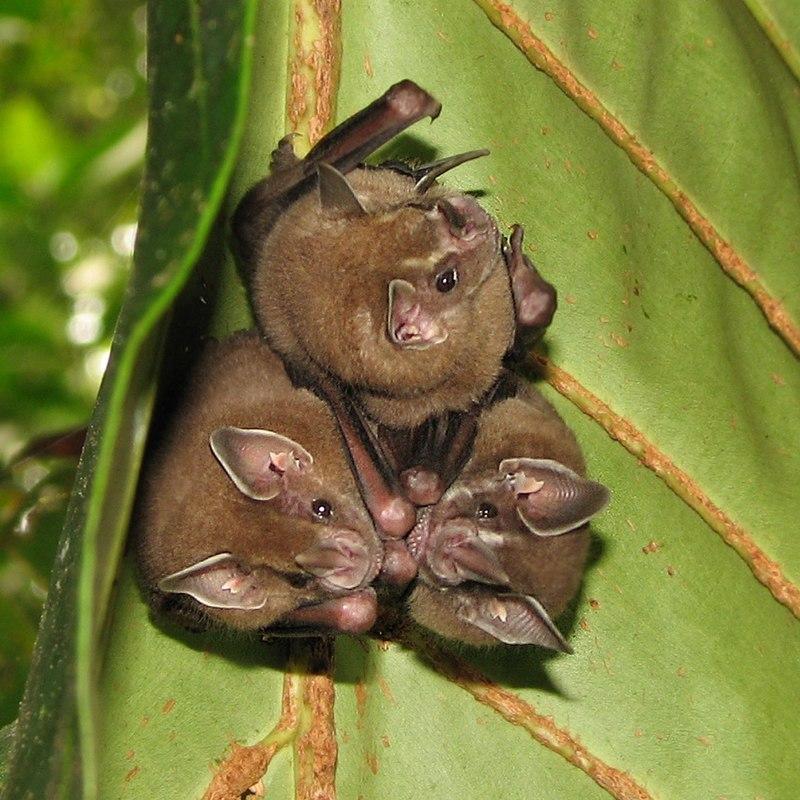Pollinators are any living or nonliving things that help with the pollination process, or the transportation of pollen grains from male plants to female plants. This article will help you learn about how some mammals contribute to pollination.
Read on to learn about the importance of mammals in pollination and about two mammals that might pollinate a plant.
Read more: What Is Pollination?
Table of Contents
- The Importance of Mammals in Pollination
- Mammal Pollinators’ Declining Populations
- Conservation Efforts for Mammal Pollinators
The Importance of Mammals in Pollination
Whenever we hear pollination, we usually think of insects such as bees, butterflies, moths, and more. However, mammals can also contribute to pollination.
In fact, 9% of known mammalian and avian species are pollinators, and because they are larger than insects, they contribute to pollination on a larger scale. According to a 2015 study, there are 343 different types of mammal species that are considered pollinators. Some are enormous in size while others are smaller, yet all serve an essential role in the pollination process.
To elaborate further, here are examples of two mammals that might pollinate a plant:
Bats
Bats are the most common and most important mammal pollinator. This is due to the fact that more than 500 flowering plant species rely on their pollination services, including different species of mangoes, bananas, guava, durians, and more. Due to their size and flying ability, bats can pollinate wider areas than insect pollinators. In fact, some bat species can pollinate on a scale of 800 meters, while others can pollinate up to 18 kilometers.

Source: Leyo/Wikipedia
How bats pollinate plants
Because bats are nocturnal creatures, they typically pollinate plants at night, making them unlike any other pollinators. This process is called chiropterophily. The flowers of the plants they pollinate are also mostly nocturnal and are often large and concave or tube-shaped, which is why some bat species have evolved physical features such as long tongues, enabling them to take nectar from these flowers.
Bats pollinate the flowers of nocturnal plants by allowing the pollen grains to stick to their tiny furs as they eat nectar. Bats then transport these pollen grains to other flowers as they continue to eat every night.

Source: Bruce D. Taubert/Bat Conservation International
Black and White Ruffed Lemur
The black and white ruffed lemur, a kind of prosimian primate, is another mammal that may pollinate a plant. These lemurs are endemic to Madagascar and are considered main pollinators of Madagascar’s indigenous plant, the traveler’s palm. They are usually found on treetops searching for food, such as fruits, flowers, leaves, nectars, and sometimes even other animal deposits.

How lemurs pollinate plants
The black and white ruffed lemur feeds on the nectars inside the flower using its long snout and tongue. Unlike other animal pollinators, these lemurs have hands and the strength to open plant bracts, a small leaf-like part of the plant found above the leaves but below the flower. Many flowers have even evolved bracts to attract pollinators. Breaking open plant bracts allows lemurs to reach nectar from hard-covered blossoms such as traveler’s palm flowers. Because of this, the black and white ruffed lemurs are the only animals capable of pollinating the traveler’s palm.
Through their feeding activity, pollen grains get attached to their snouts, hands, and furs as they consume nectars, transferring them to the next flower as they continue to eat.
Other Mammal Pollinators
Aside from the two mammal pollinators mentioned above, there are other mammals that can pollinate plants. All of them serve crucial roles in preserving ecological balance by allowing plants to thrive and reproduce. Other mammal pollinators include:
- Deer
- Monkeys
- Field Mice
- Squirrels
- Rabbits
- Bears
These mammal species contribute to pollination mostly through their eating habits, as they usually interact with plants, flowers, and fruits on a daily basis in order to survive.
Mammal Pollinators’ Declining Populations
Mammal pollinators are facing different threats to their existence, mostly due to human factors. According to research, 13 of the 343 mammal pollinators experienced population declines between 1996 and 2008. For example, the Choco Broad-nosed bat population has decreased drastically, raising its classification from vulnerable to endangered. This is due to continuous deforestation for agricultural purposes, which has converted their natural habitat into cocoa farms.
According to the IUCN Red List Category, around 2.5 species of avian and mammal pollinators are moving towards the classification of extinction every year, and the majority of the remaining species, despite their classifications not changing, are still undergoing population decline.
The main drivers of the mammal pollinators population decline include:
- Agricultural conversion of forests.
- Illegal Poaching.
- Damages due to wildfire.

Source: Global Trends in the Status of Bird and Mammal Pollinators
Conservation Efforts for Mammal Pollinators
Different organizations from across the world are working on conservation initiatives to combat the declining population of some mammal pollinators. These conservation efforts are critical not only for the ecosystem but also for the economy; mammal pollinators help meet the global demand for different products, including many different types of foods.
Here are some of the mammal pollinator conservation efforts led by different organizations.
Lemur Conservation Network
This organization is conducting multiple programs in support of the lemur population in Madagascar. These programs include:
- Providing education to the public on how important lemurs are in the ecosystem, on their population status, and on how to properly conserve lemurs.
- Collaborating with 60 different conservation organizations, research groups, and zoos to save the declining lemur population.
Merlin Tuttle’s Bat Conservation Organization
This organization is spearheaded by Dr. Merlin Tuttle, an ecologist, environmentalist, writer, and wildlife photographer who studies bat ecology, behavior, and conservation. The organization provides:
- Workshops that focus on the expansion of knowledge about bats and their conservation requirements
- Ambassador appearances for the bats through media coverage, public lectures, training sessions, and conservation advice.
